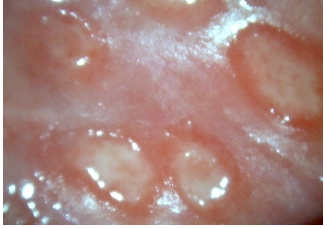Check out today’s Step 2 CK Qmax Question Challenge.
Know the answer? Post it in the comments below! Don’t forget to check back for an update with the correct answer and explanation (we’ll post it in the comments section below).
A 23-year-old G0P0 African-American woman presents to her gynecologist for her annual examination. She has no significant gynecologic history, but her mother has a history of endometrial cancer. She is currently in a monogamous relationship with her boyfriend of 3 years. She denies any history of pregnancy, pelvic pain, sexually transmitted diseases, or excessive vaginal bleeding. On examination her physician feels a firm, irregular mass. The gynecologist suspects that the patient has a uterine fibroid and confirms this diagnosis by transabdominal ultrasound.
What is the underlying etiology of this uterine fibroid?
A. Benign neoplastic growth of uterine endometrial cells
B. Benign neoplastic growth of uterine myocytes
C. Invasion of endometrial glandular cells into the myometrium
D. Malignant neoplastic growth of uterine endometrial cells
E. Malignant neoplastic growth of uterine myocytes
———————–
Want to know the ‘bottom line?’ Purchase a USMLE-Rx Subscription and get many more features, more questions, and passages from First Aid, including images, references, and other facts relevant to this question.
This practice question is an actual question from the USMLE-Rx Step 2 CK test bank. Get more Step 2 CK study help atUSMLE-Rx.com.





B) Uterine Leiomyoma
B
B. There is a slightly higher number of African American women that have these fibroid tumors. When studies are done any other factors have been ruled out. As to why African American women have a higher incidence is unknown.
The correct answer is B. The etiology of uterine fibroids (leiomyomas) is not fully understood, but they are believed to result from neoplastic growth of abnormal myocytes within the uterus. Leiomyomas are believed to have no malignant potential. Fibroids typically occur during childbearing age and are usually asymptomatic, requiring no treatment. However, some women suffer from heavy uterine bleeding, pain, bulk symptoms such as increased urinary frequency or pelvic pressure, and occasionally infertility.
A is not correct. Leiomyomas derive from the smooth muscle cells of the myometrium rather than the endometrium.
C is not correct. The abnormal invasion of endometrial glands into the myometrium is called adenomyosis. The surrounding myometrium undergoes hypertrophy and hyperplasia as a reaction to this invasion. Up to 60% of women who have adenomyosis also have uterine fibroids. The symptoms of this disease include dysmenorrhea and menorrhagia, and if severe may be treated with a hysterectomy.
D is not correct. Leiomyomas derive from the smooth muscle cells of the myometrium rather than the endometrium. Additionally, leiomyomas are benign tumors.
E is not correct. Leiomyomas are benign neoplastic growths of smooth muscle myocytes from a single cell line. They are not locally invasive, do not metastasize, and are therefore not considered to be malignant.
Thank you for the explanation .
Pingback: Real estate Agent in Suffolk VA - Home Purchase
Pingback: 19??
Pingback: pasarqq
Pingback: Kaufen Sie einen echten registrierten Führerschein
Pingback: nam mo thay giet nguoi
Pingback: m? th?y cá lóc
Pingback: m? th?y ?i tàu h?a
Pingback: document location
Pingback: n?m m? th?y mình th?p h??ng